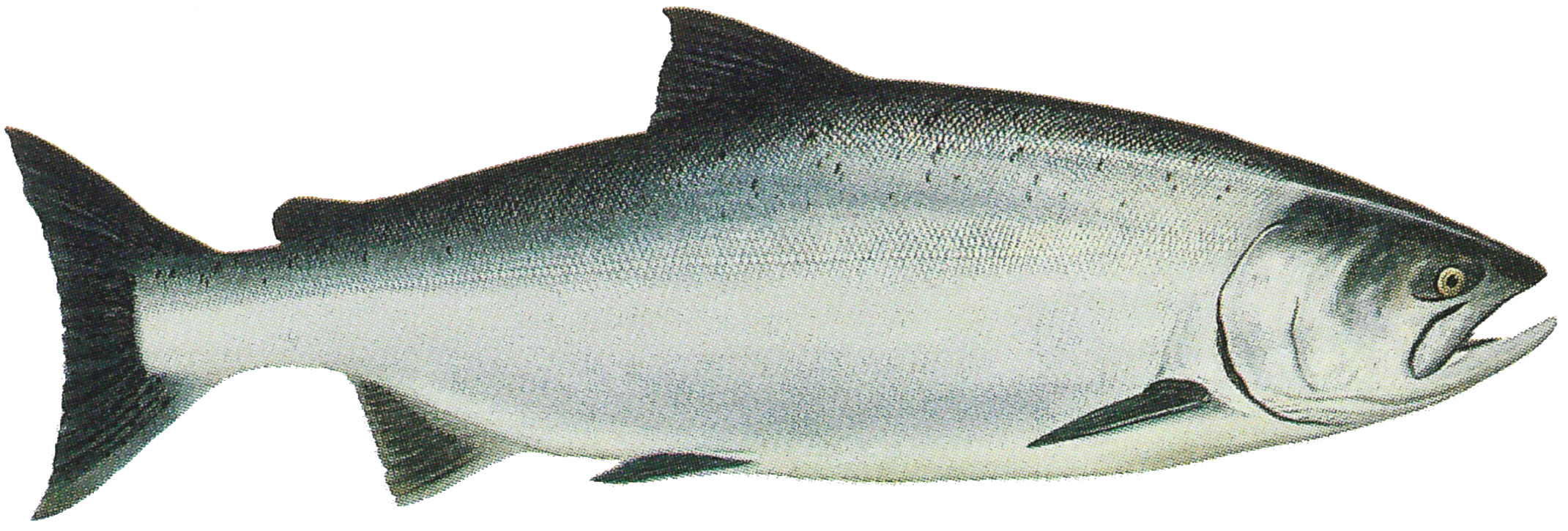NOAA report establishes Chinook monitoring framework
A new Chinook monitoring framework is designed to build cooperation among managers and policymakers working across the Puget Sound watershed. The report, prepared by an independent team of scientists and released by NOAA, includes a regionally specific, common classification system for Chinook habitats and key ecological attributes.

Development of the framework (download the report) grew out of NOAA’s 2007 Puget Sound Chinook Salmon Recovery Plan. At that time, NOAA’s National Marine Fisheries Service identified a “critical need” for a consistent and rigorous monitoring and adaptive management approach.
Puget Sound Chinook were listed in 1999 as “threatened” under the federal Endangered Species Act. NOAA reports that existing populations are about a third the size of those measured in the early 1900s. For the 22 remaining populations of Puget Sound Chinook, one increased and one declined in abundance from 2006 to 2010, according to the agency.
The draft says monitoring and adaptive management have been ongoing in the region, but “the framework is intended to help salmon recovery managers formalize their local scale monitoring and adaptive management plans using a common approach,” while also supporting roll up of monitoring and recovery effort information to the regional scale.
NOAA recognized that even as many groups work toward a common goal of Chinook recovery, not every group would have the same research goals or share the same core standards. “A lack of formal framework meant no standardized vocabulary or shared common approach,” reads the report.
To help bridge the gaps, NOAA established the Puget Sound Recovery and Implementation Technical Team (RITT). The RITT developed the report’s framework using the Open Standards for the Practice of Conservation, a science-based approach for decision-making and prioritization of conservation issues and efforts.
 The Open Standards were first published in 2004 by the Conservation Measures Partnership, a group of conservation organizations with a mission to develop “principles and tools to credibly assess and improve the effectiveness of conservation actions.” Open Standards are similar to the principles of Conservation Action Planning (CAP), a process used by The Nature Conservancy in the Puget Sound region for more than ten years. Read more.
The Open Standards were first published in 2004 by the Conservation Measures Partnership, a group of conservation organizations with a mission to develop “principles and tools to credibly assess and improve the effectiveness of conservation actions.” Open Standards are similar to the principles of Conservation Action Planning (CAP), a process used by The Nature Conservancy in the Puget Sound region for more than ten years. Read more.A key goal, according to the RITT is to build cooperation among managers and policymakers, informing decisions “on all scales (watershed, cross-watershed, and regional).”
Kari Stiles, a research scientist with the University of Washington Puget Sound Institute who provided support to the RITT through the Open Standards process, says the Chinook framework could also provide the basis for development of a more comprehensive approach to watershed recovery planning and implementation, and is being considered for expansion to other regional salmon recovery efforts, including steelhead.
The framework focuses on primary elements including ecosystem components, key ecological attributes, indicators, pressures, stresses, contributing factors (such as human induced actions or other factors contributing to the existence of pressures or stresses), drivers and strategies.
In particular, the report provides a regionally specific, common classification system for habitats and key ecological attributes. While much literature on habitat classifications exists, there were few comprehensive classifications for Chinook specifically, according to the authors. “No existing classification system adequately links physical controls and processes with biological controls and processes (e.g., zoogeography, community structure, species interactions, population dynamics),” reads the report.
In summer 2013, a team including RITT members, Puget Sound Partnership staff, Puget Sound Institute scientists, local consultants and representatives from all of the Chinook watersheds will begin a year-long effort to bring all of the existing Chinook recovery plans into alignment with the framework.
The document, labeled “Puget Sound Chinook Salmon Recovery: A Framework for the Development of Monitoring and Adaptive Management Plans” will go through a final review before being published as an official NOAA Technical Memorandum. A full list of authors includes: Krista K. Bartz1, Eric Beamer2, Kenneth P. Currens3, Kirk Lakey4, Michael Parton5, Kit Rawson6, Mindy Rowse1, and Norma Jean Sands1 and Rebecca Ponzio3 and Kari A. Stiles7.
1 Northwest Fisheries Science Center
National Marine Fisheries Service
National Oceanic and Atmospheric Administration
2 Skagit River System Cooperative
3 Puget Sound Partnership
4 Washington Department of Fish and Wildlife-Habitat Program
5 Environ International Corporation
6 Tulalip Tribes
7 Puget Sound Institute, Center for Urban Waters, Univ. of Washington, Tacoma

